Interview: How the Filmmakers of Loving Vincent Brought Van Gogh’s Paintings to Life
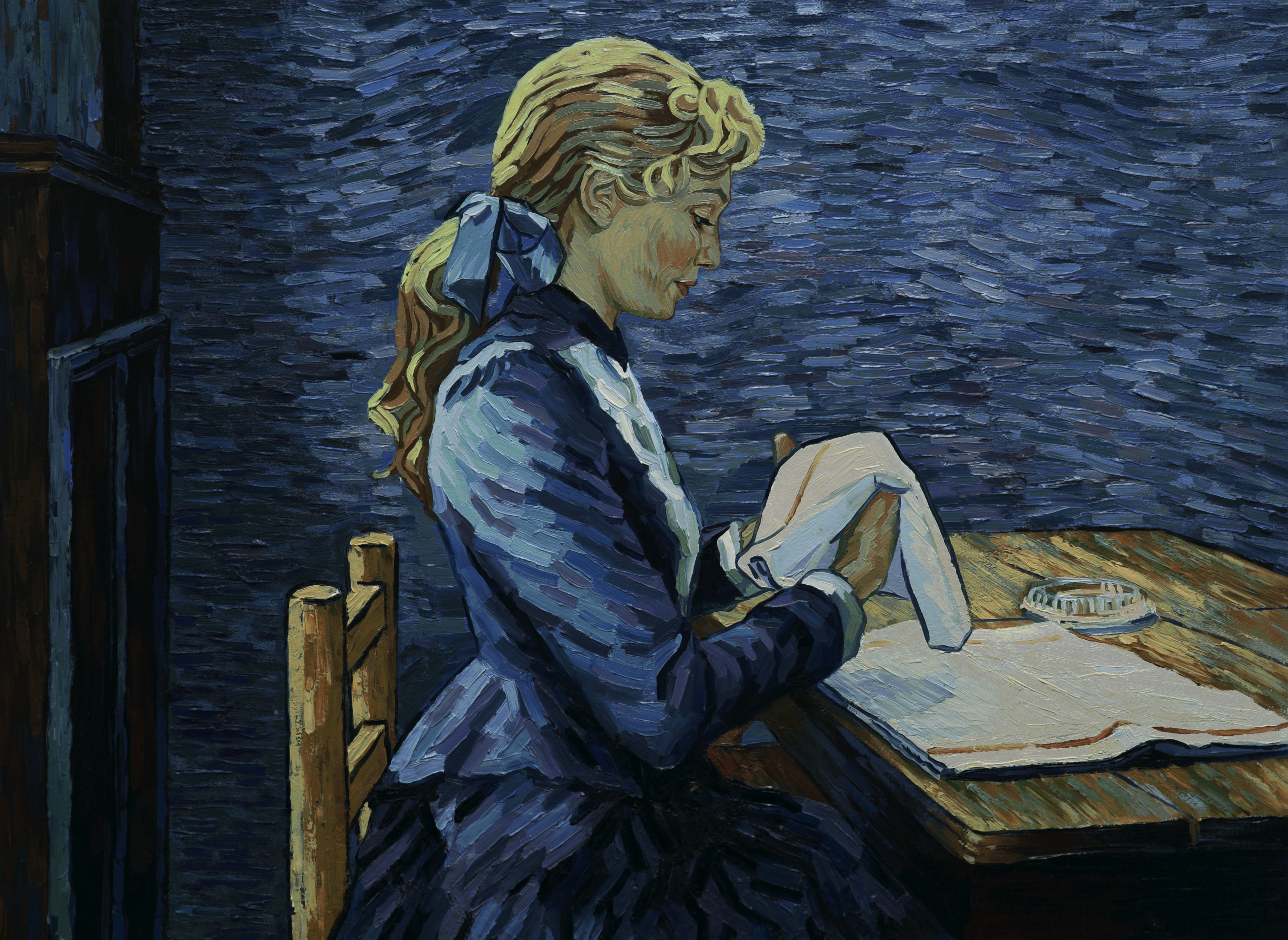
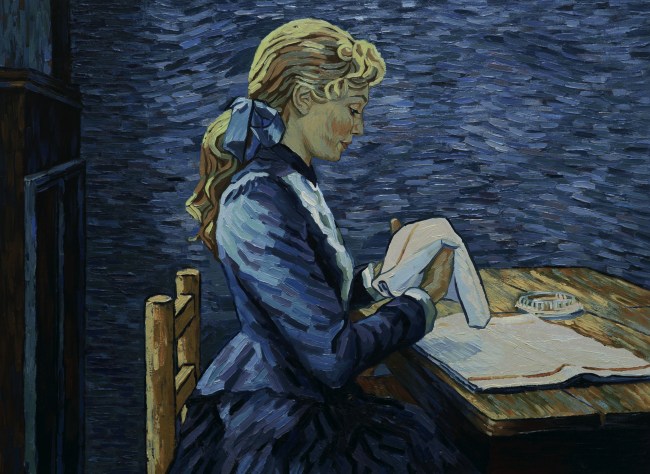
“We cannot speak other than by our paintings,” wrote Vincent van Gogh in a letter the week before his death. The film Loving Vincent opens with this quote, and captures the challenges of trying to write about this film. How can one possibly try and condense such a visual experience into writing? How does one take the experience of viewing Van Gogh’s paintings and translate them into a film?
Directed and written by Hugh Welchman and Dorota Kobiela, Loving Vincent is told solely through oil-painting and makes reference to many of the artist’s most iconic works. Over an email interview, the two told me more about how this challenging labor of love was born out a desire for people to know–really know–the rich and emotional life of this iconic man.
TMS (Charline): Can you tell me about the decision to focalize the story through Armand and other subjects of Van Gogh’s, as well as the focus on Van Gogh’s death?
Hugh Welchman and Dorota Kobiela: The idea was always to bring Van Gogh’s portraits to life to tell his story. There are three major feature film biopics that focus on Vincent, so we felt this approach had been done. There are many conflicting views about Vincent, and still many mysteries despite over 100 years of dedicated scholarship, so conflicting views from the people around him seemed a promising dramatic approach.
Unfortunately, it is often only after someone’s tragic death that people tend to ask questions about the person, and want to know who that person was, and what went wrong for them. Who Vincent was and what went wrong for him in spite of his big heart, prodigious talent, and love for the world was something that fascinated us, and we thought it would fascinate others. We needed a main character who could change his view of Vincent the more he found out about him, so it couldn’t be someone like Père Tanguy, who was a loyal friend and passionate supporter of Vincent’s work. It needed to be someone who was skeptical, but who could then be won round.
Armand seemed the perfect choice. His father was friends with Vincent, but Armand would have lots of reasons to be suspicious of his father’s eccentric foreign friend.
TMS: What do you think the oil paintings do for the audience that no other method of film or animation could have accomplished?
Welchman and Kobiela: Vincent painted in oil paints on canvas, so it was by far the best way to get close to and appreciate his work. People often say to us that they could have achieved the same effect in the computer, and our answer is always, “Great, show us.” We did tests in computer animation, and we could never match the feeling and quality of oil paints really moving in front of your eyes that you see in our technique.
To our eyes it looked the most beautiful and moving, that’s why we went to all the trouble of painting it by hand. It is up to others to judge whether it was worth all that effort!
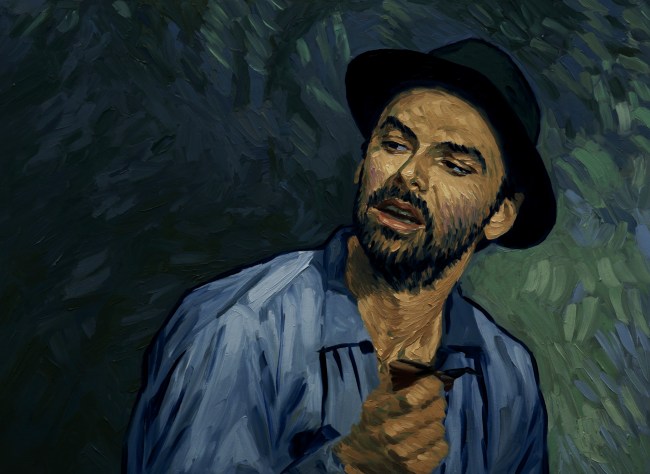
TMS: Was there a lot of pressure in making this film because of the labour required, to do Van Gogh’s work and story justice?
Welchman and Kobiela: Absolutely. We felt a great pressure to be true to the spirit of his paintings. When translating his work into the medium of film, we obviously had to make changes, as static paintings are a different art form from moving images over time that tell a story. We had to re-imagine them into this different medium while trying to stay true to what his work is about, and make our audience feel like it was paintings moving before their eyes. We worked closely with the Van Gogh Museum, who gave us a lot of detail about the technical side of how Vincent painted, but mostly we learnt from spending a lot of time studying and analyzing his paintings.
In terms of the story, we had to be very careful about how far we strayed from historical reality. Our aim was to only do this where the historical reality is unknown. For example, this is why we made Armand Roulin the main character. There is nothing written about him in the historical record, so we could create his personality to suit our dramatic needs, although his character was very much inspired by the feeling we got from viewing his portrait.
The same goes for Louise Chevalier and many others in the film. Whereas there are letters from and accounts of Père Tanguy, Postman Roulin and Doctor Gachet, so we had to keep their characters true to these sources. And of course we had to be most careful with Vincent because there is so much written about him, not least of all by himself, coming from his letters.
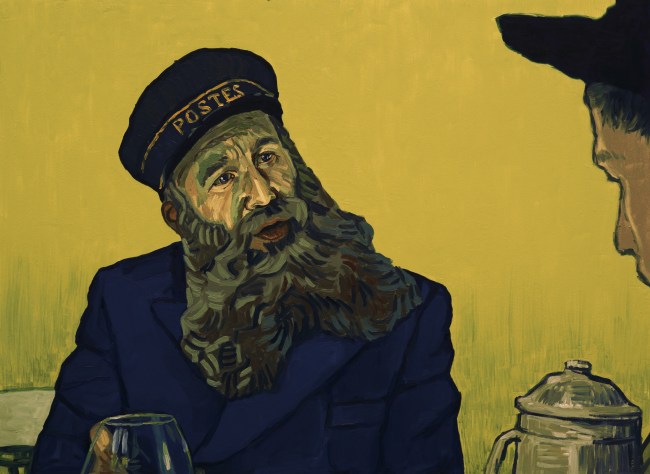
TMS: Through making this film, do you feel like your understanding or image of Van Gogh changed?
Welchman: Yes. For me much more so than Dorota. Dorota studied him at art high school, and knew his paintings and letters intimately by the time she initiated the project. I knew what most people know when I started working on the project as a producer. I knew that he cut off his ear, went crazy, painted the sunflowers, and that his paintings were among the most famous in the world.
When I started reading about him, and reading his letters, I was astounded by his story. That’s why I became involved as a writer and a director as well. Vincent had failed miserably at 4 careers by the time he was 28, and had been largely written off by his family as a hopeless case with no prospects for work or for marriage, and he was deeply depressed about his situation.
Yet from this low point he found the will and the passion to embark on a new career as an artist. He only had rudimentary skills as a draftsman, but through sheer hard work he taught himself to draw and to paint and in the space of 9 years was creating art that changed art forever.
And he managed this despite experiencing much rejection and severe personal setbacks, most notably severe mental health issues. Amazingly he remained completely un-cynical towards people, and had a real love for people and the world right up until his death. I find this incredible in someone who had such difficulty negotiating everyday life, and struggled with everyday interactions with people.
TMS: Seeing Van Gogh’s paintings (which are so curious in their perspective) in motion was a really special experience. What was the process of drafting that movement like? How does one imagine what goes on before, or after one of Van Gogh’s images?
Welchman and Kobiela: Vincent’s paintings often don’t abide by the laws of physics, and his characters often don’t abide by the laws of anatomy, so they presented many challenges when it came to moving them. We had to pretty much approach each painting differently to create the references for the painters.
We used digital painting, VFX techniques, computer modelling and animation, and live action shooting in various proportions to create the references for the painters to animate. In many instances we couldn’t provide references, and the painters had to simply imagine them into life through the movement of brushstrokes.
Always we were motivated by being as close to the original paintings as possible, but often there was a conflict between this and having a film which would cut together in a way that the changes between paintings wouldn’t be such a jump that it would disconcert our audience. In terms of imagining what is outside the frame we spent 2 years storyboarding, modelling environments, and doing design paintings.
We also followed in the footsteps of Van Gogh, and visited Arles and Auvers where the film is mainly located. We went there several times, taking photo and video references, and spending time sitting in the locations he lived in and painted in.

TMS: We are offered so many images of Van Gogh– that of a tortured soul, a loving man, a genius, etc. How do you think your film fits into the image of Van Gogh that culture has created?
Welchman and Kobiela: Vincent was all those things and more. As well as there being so many images and accounts and theories of how he was as a person and why, there are still many mysteries surrounding him, which are still hotly and passionately contested. This is why it felt right to set the film
after his death, with the people around him, some who knew him well, some who barely knew him, some who understood him as an artist, some who couldn’t care less about art, coming into conflict over who he was and why he died.
This approach felt right to us, especially as there have already been three major biopic movie portrayals of Vincent. Our aim was always to bring his paintings to life to tell his story. In his last letter (the one found on him by Theo when he died) he said “We cannot speak other than by his paintings.” In fact Vincent speaks to us through his letters as well as his paintings, and we wanted to be close to his letters and to his paintings, and they do leave us with many fascinating questions, some of which will never be resolved, but what’s for sure is that he was a fascinating man with a deep love for the world, which he often failed to communicate in person, but managed to communicate in spectacular fashion through his work.
TMS: The shifts between black & white and color can be jarring. Can you tell me more about the thought process behind those shifts?
Welchman and Kobiela: There were 3 reasons that the black and white oil-painted style came about. Firstly, we wanted to dramatise times and situations from Vincent’s story for which there were no painting references. For example, when he was a kid, or his funeral. We didn’t want to make up Vincent style paintings without basing them in his real paintings.
The second reason was that we wanted to differentiate the ‘present’ in the film, and the flashbacks. So in our film the present day is in Vincent painting style, and the flashbacks are in black and white.
Finally, we were very worried that 94 minutes of intense Vincent style would be too much visually for an audience, and the interspersing of the black and white sequences would give people a break, and allow them to more fully appreciate Vincent’s work.
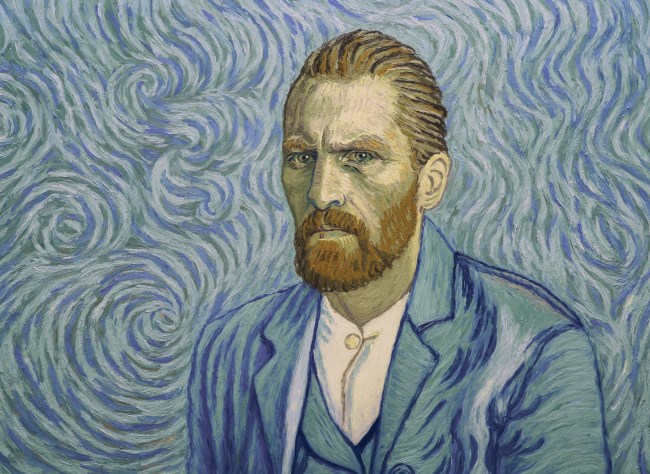
TMS: What do you want viewers to get out of Loving Vincent?
Welchman and Kobiela: We want them to feel moved by Vincent’s story and to come out with a desire to discover more about his work and his life. We wanted to offer up a new visual approach, and we hope that our audience will enjoy having seen something a bit different from most of the films they will see.
Loving Vincent is currently in NYC theaters and expanding nationally.
(images: Good Deed Entertainment)
Want more stories like this? Become a subscriber and support the site!
—The Mary Sue has a strict comment policy that forbids, but is not limited to, personal insults toward anyone, hate speech, and trolling.—
Have a tip we should know? tips@themarysue.com